2 minute video of the Apollo 11 Moonwalk (Video courtesy of Youtube and posted by NASA Johnson)
Mission
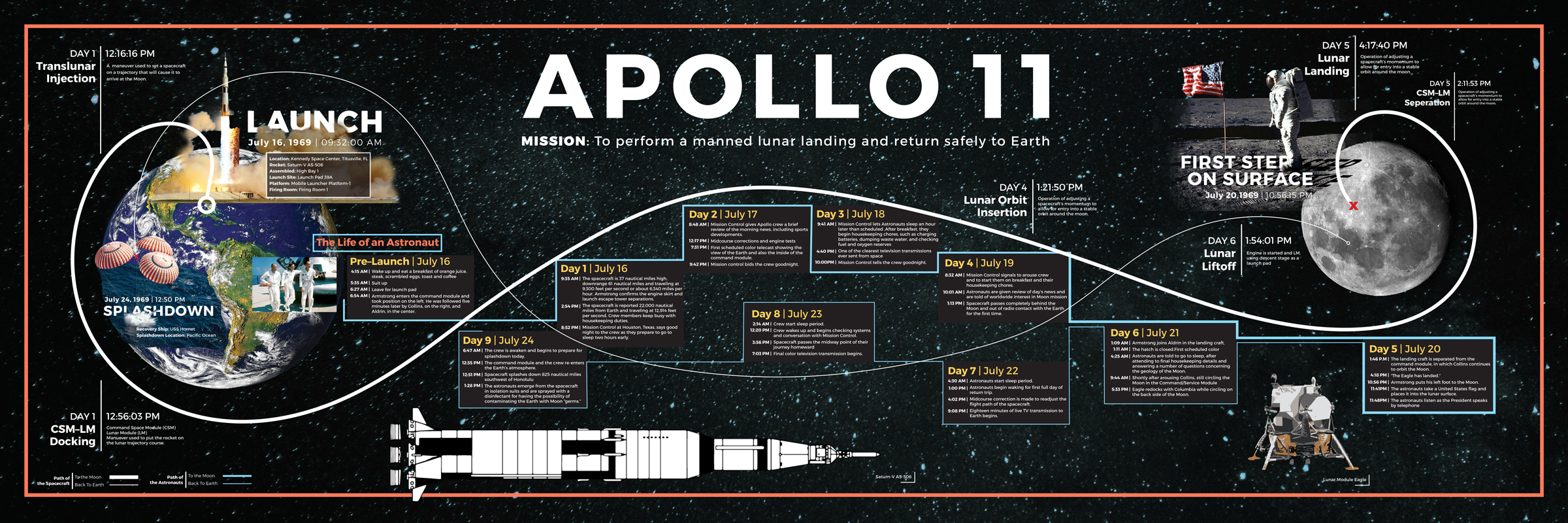
Image courtesy of NASA Science

Image courtesy of NASA Science
Apollo 11 mission took place from July 16 to July 24, 1969. The astronauts included Neil Armstrong, Edwin "Buzz" Aldrin, and command module pilot, Michael Collins, who never left the Command Module, orbiting the moon during the mission. The rocket “Saturn V”, which was a 363ft tall rocket which would launch them to the moon from Cape Canaveral on July 16th, 1969. Four hours and 40 minutes into the flight, the S-IVB stage separated and ejected into heliocentric orbit. Then, it was a wait of 4 days until they would land on the moon.
The image above depicted the official map plan NASA had to land on the moon after orbiting around it. (Image courtesy of NASA Apollo 11 Mission Overview)
Above is a map where the Eagle was planned to land and a depiction of the area related to where the landing module was to be and where the astronauts were to explore. (Image courtesy of NASA Apollo 11 Mission Overview)
On July 20th, 1969, The Eagle landed in the Sea of Tranquility, on the moon. Neil and Edwin rested in the Eagle for 4 hours, then started preparing. Armstrong got the TV camera ready, then took the first step on the moon. “…One small step for man, one giant leap for mankind”, said Armstrong, while 530 million people watched on television. "After about 2 hours, after talking to President Nixon, and doing a couple of experiments, Armstrong and Aldrin walked back into the Eagle. The total time they spent on the moon’s surface was 21 hours and 36 seconds" (Loff and NASA).
2 minute video of the Apollo 11 Moonwalk (Video courtesy of Youtube and posted by NASA Johnson)
On July 21, the Columbia was in Earth's orbit. Its engines fired, the parachutes deployed, and the Columbia spacecraft splashed down into the Pacific Ocean near Hawaii, and the USS Hornet ship took them to Florida to be greeted by President Nixon. The flight back to earth took 195 hours, and 18 minutes, on July 24th, 1969.
It safely splashed down about 950 miles southwest of Honolulu and only 15 miles from recovery ship USS Hornet.
One of the most challenging parts of the Apollo 11 mission was landing the Eagle. It only had 27 seconds of fuel left when it landed, but was successfully pulled off.
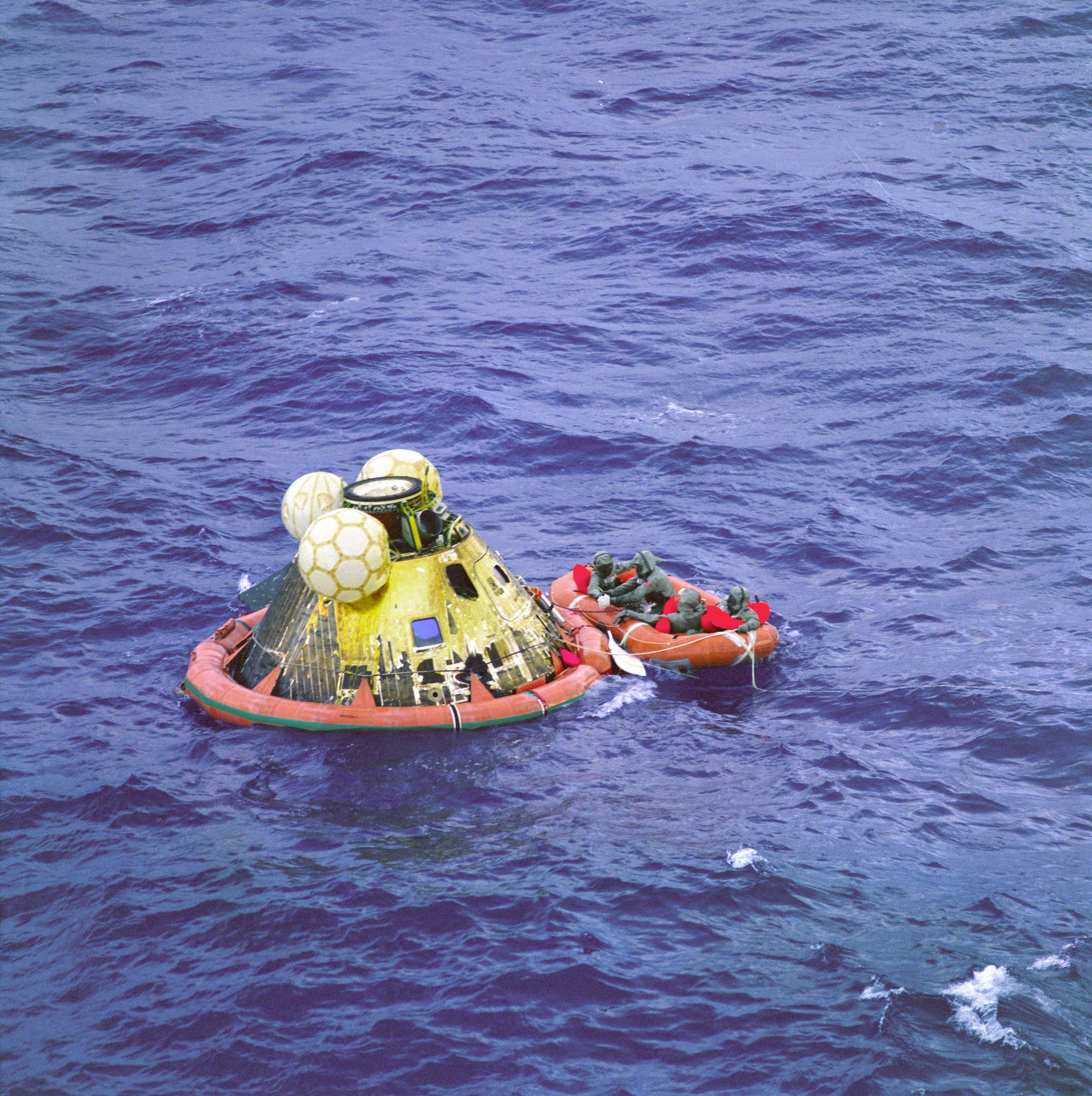
The Apollo 11 crew await pickup by a helicopter from the USS Hornet, prime recovery ship for the historic lunar landing mission.
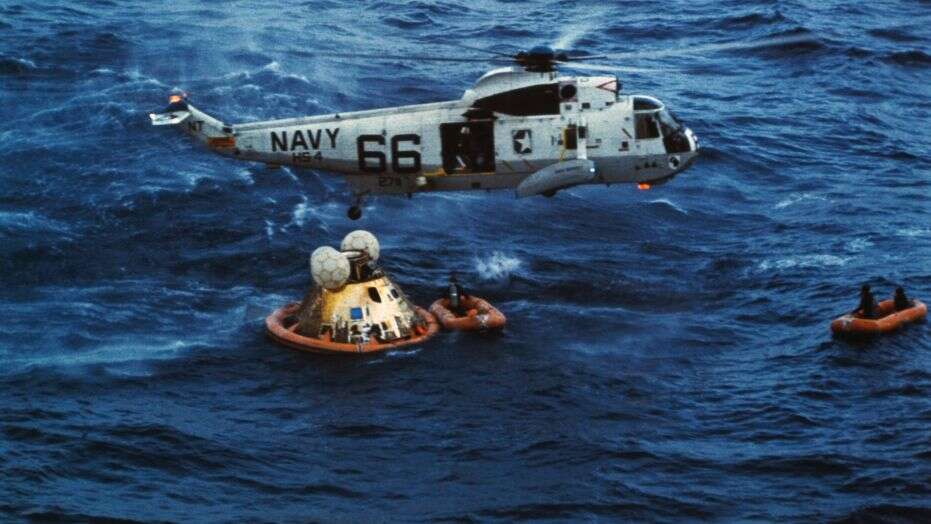
The Apollo 11 spacecraft floats in the Pacific after successful splashdown, as frogmen prepare to open hatch and remove astronauts Neil Armstrong, Buzz Aldrin and Michael Collins July 24, 1969.
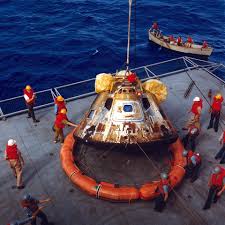
Workers work to enable the Eagle to be safely transported by taking off its floatation devices.
After the Apollo crew splashed down on Earth, they took a ship to Hawaii and passed through customs like normal people at the Hawaii Airport and declared moon rocks and moon dust among their items. After getting to Florida, the astronauts were required to stay inside the Kennedy Space Center in quarantine for 21 days as a precaution against an uncertain threats. The moon proved to be lifeless so this post-flight procedure was dropped after the Apollo 14.
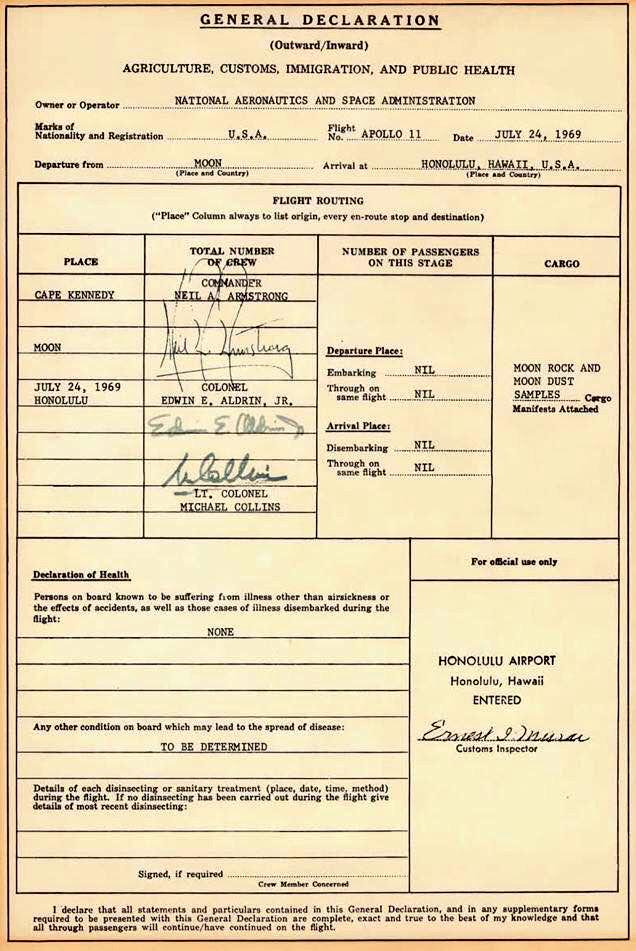
This is the customs form all three of the astronauts had to fill out. Like any other traveler, the astronauts had to go through the same procedures as others who leave the country. The customs form was signed by all three Apollo 11 astronauts at the Honolulu Airport in Hawaii on July 24, 1969. They declared Moon rocks, moon dust and other lunar samples. (Image courtesy of NASA History Offices)
"After returning from the first lunar landing mission and after their quarantine, the Apollo 11 astronauts received a tumultuous welcome from New Yorkers who dropped a record tonnage of paper during a ticker-tape parade, a tradition which welcomed returning heroes" (CBS News). They also went on a world tour after the parade.

Armstrong, Adrin, and Collins in quarantine container on national television with President Nixon after landing (Image courtesy of Smithsonian National Air and Space Museum)

Apollo 11 Ticker-Tape Parade in New York City (Image courtesy of the Smithsonian National Air and Space Museum)